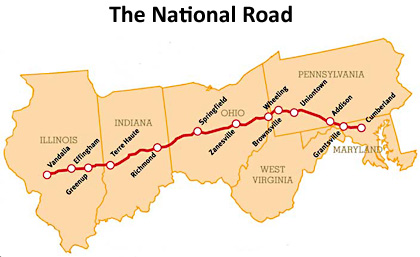On a recent wine tour in the Beamsville Bench region, I watched a fascinating interaction between a winery representative and a potential purchaser. Out of respect, I won’t identify the winery (although there are a few in both Beamsville and Niagara who profess to be “biodynamic” wineries), but the question was asked and the poor winery employee had to fight against her own clear instincts and try to describe in positive terms the utter bullshit that is “biodynamic” theory. Kindly, the questioner allowed her off the hook quickly and our group moved off to taste some other wines.
At Boing-Boing, Maggie Koerth-Baker links to an older article at the SF Weekly saying:
[…] biodynamic farming is, essentially, organic farming … plus a heaping helping of astrology, mysticism and some delightfully medieval-gothic growth preparations. (One involved taking fresh cow skulls, stuffing them with oak bark, burying them at the fall Equinox, unearthing in spring and adding minute amounts of the resulting goop to compost piles. Ostensibly to promote healing in plants.) Perhaps unsurprisingly, large, independent, peer-reviewed studies haven’t found much of a difference between biodynamic and organic grapes. Now, some folks like biodynamic wine, and that’s cool. I just think people ought to know what it is they’re paying a premium for.
The link is broken, but from the old URL, it’s probably this one:
When asked just what was going on, Eierman shot a glance at Jessica LaBounty, Benziger’s marketing manager, who closed her eyes and gave a quick nod. The gardener proceeded to explain that the severed heads were a vital ingredient in Biodynamic Preparation No. 505: Finely ground oak bark will be placed into the cows’ fresh skulls and stored in a shallow, moist hole or rain bucket throughout autumn and winter. The resultant concoction is then applied, in nearly undetectable quantities, to the gargantuan compost piles; Benziger’s promotional literature claims it “stimulates the plant’s immune system and promotes healing.”
Light-years from the surreal scenes at the Sonoma winery, glasses tinkled and forks hit plates of house-marinated olives in a dimly lit San Francisco storefront. Sharply dressed men and their attractive dates laughed over full pours of red and white at Yield Wine Bar in San Francisco’s up-and-coming Dogpatch neighborhood. Nearly half of the 50 wines served that night were grown Biodynamically — a fact prominently displayed on the bar’s menu. When asked what, exactly, this means, bar co-owner Chris Tavelli described Biodynamics as “the highest level of organics, you know, organic above organic.”
Among those who earn a living selling wine to the general public, this was a typical answer. Those with a vested interest in moving Biodynamic wines almost invariably use the words “natural” and “holistic” — terms that are malleable and vague, but near and dear to every San Franciscan’s heart. Its producers and sellers describe the process as “organic to the nth degree,” “the Rolls-Royce of organic farming,” or, simply, “the new organic.”
It’s an explanation Tavelli and fellow wine merchants have to make — or, more accurately, not make — now more than ever. Winemakers recently began aggressively marketing their Biodynamic status as a selling point, claiming their product to be both the “greenest” and most distinctive-tasting available. In San Francisco, Jeff Daniels of the Wine Club has added 10 new Biodynamic labels in the last year alone; Kirk Walker of K & L Wine Merchants says customer queries about Biodynamic wines have jumped in the past few years from roughly one a week to more than 30. Dozens of other San Francisco winesellers concur that they’ve augmented the number of Biodynamic wines they carry by four, five, or even 10 times of late. National chains report the same, and rank San Francisco as perhaps the nation’s top consumer of Biodynamic wine.

 Professional painters in the 1800s prepared house paint by mixing linseed oil with white lead paste. About 90% of Americans lived in rural areas in the mid-1800s, and subsistence farmers could make linseed (flaxseed) oil, but few had access to white lead, so they mixed linseed oil with red rust to kill fungi that trapped moisture and increased wood decay. Red barns are still a tradition in most USA farming regions but white barns are the norm along the path of the old National Road. Why?
Professional painters in the 1800s prepared house paint by mixing linseed oil with white lead paste. About 90% of Americans lived in rural areas in the mid-1800s, and subsistence farmers could make linseed (flaxseed) oil, but few had access to white lead, so they mixed linseed oil with red rust to kill fungi that trapped moisture and increased wood decay. Red barns are still a tradition in most USA farming regions but white barns are the norm along the path of the old National Road. Why?

